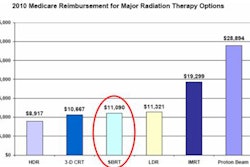Breast-conserving therapy is a viable treatment option for African-American women, who tend to present with more advanced breast cancer, researchers from Michigan recently reported in the journal Cancer.
When African-American women are diagnosed with breast cancer, they tend to be younger than Caucasian women and present with more advanced disease. Although socioeconomic factors may be influential, many oncologists believe that African-American women have more biologically aggressive breast cancer. This raises the question of how effective breast-conserving therapy -- recommended for early-stage, low-risk women -- is for these patients.
Researchers at William Beaumont Hospital in Royal Oak, MI, reviewed relevant patient files from 1980 through 2003; 699 patients, of whom 39 (6%) were African-American, had either a lumpectomy or partial mastectomy and a complete axillary lymph node dissection (Cancer, online May 17, 2010).
All patients received adjuvant radiation to the whole breast up to a total median dose of 45 Gy, followed by a supplemental boost to the tumor bed up to a total median dose of 61 Gy. Regional lymph node radiation was delivered as clinically indicated.
Lead author Dr. Frank Vicini and colleagues found that African-American women presented at a younger age with a higher disease stage, larger tumors, higher grade cancers, more than four positive lymph nodes, and more estrogen-receptor-negative and progesterone-receptor-negative tumors than the 660 Caucasian patients treated.
Nearly half were younger than 50, compared with 26% of the Caucasian women. Fifty-one percent had a T2 or T3 tumor, compared with 29% of Caucasian women, and only 36% were diagnosed with stage I disease, compared with 61% of Caucasian women. Thirty-six percent had positive lymph nodes, of whom 18% had more than four, compared with 26% and 8% for Caucasian women, respectively.
African-American women required more lymph node irradiation and systemic chemotherapy than their counterparts. Twenty-six percent required regional lymph node irradiation, compared with 13% of Caucasian patients. Nearly 60% had chemotherapy, compared with 19% of Caucasian women.
Toxicities also were more severe, with more African-American women reporting breast pain, arm edema, and a lower percentage of excellent and good cosmetic results.
However, breast-conserving therapy produced equally effective results. No statistically significant differences in local recurrence, distant metastasis, cause-specific survival, and overall survival could be identified between the two groups, according to Vicini and colleagues.
Related Reading
Breast cancer care delayed for African-Americans, October 27, 2009
Racial disparities in breast cancer outcomes spark research, October 10, 2003
Copyright © 2010 AuntMinnie.com



















